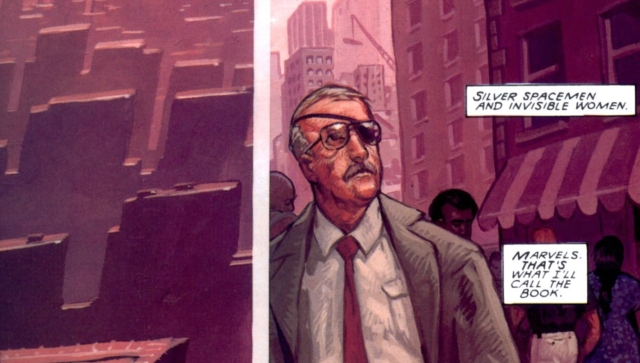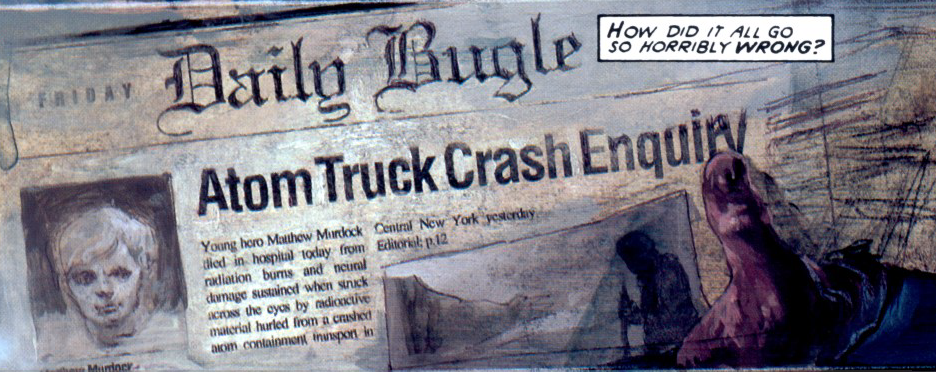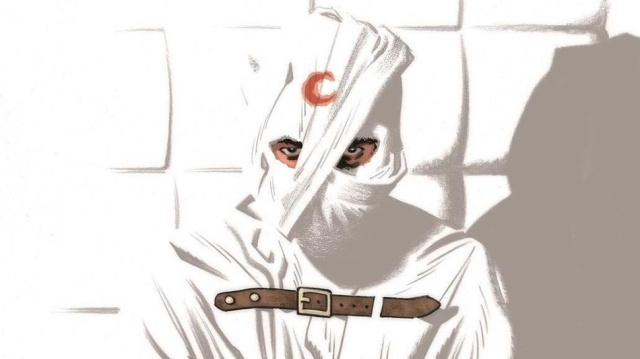
Phil Sheldon referencing “Marvels”a four-issue limited series comicbook written by Kurt Busiek and the artwork by Alex Ross. “Ruins” was set as a parody of “Marvels”.
If the world you know is one of Marvels, where men without fear face horror unarmed, and women in flight ride the upper reaches of the weather then, only a misstep or a stopped heartbeat away, is a world of Ruins. -Warren Ellis, Ruins
It’s the dawn of a new day (and quite possibly a new era) as Donald J. Trump is about to be sworn in as the 45th President of the United States of America and hold one of the most powerful positions in the world. The absurdity of a decade long Simpsons joke became a reality. And, understandably, someone would ask what does this have to do with comicbooks? How can we draw a line between this new era that has begun with comicbook literature?
These, of course, would be valid questions. Like most of the world, I am afraid that we are entering a phase that eerily resembles the beginning of a dystopian novel. It seems like we just found that one moment where everything went wrong. As someone who is a big supporter of the idea that we should be engaged in global politics, since they reflect our stance in issues like climate change and securing human rights for everyone, Donald Trump’s election came as a big shock. How are we going to protect all the things we have won through so many fights? How are we going to fight this wave of racism, sexism, homophobia, religious discrimination and denial of factual evidence of a man-made environmental destruction?
While thinking all that, my mind travelled to Phil Sheldon and his journey. Phil Sheldon is the main character of a two-issue comic book mini-series, Ruins, written by Warren Ellis with the artwork of Terese Nielsen, Cliff Nielsen, and Chris Moeller. Phil is a reporter that is looking for that one single event that changed the course of history, a history that was promised to be glorious. And yet his world was plunged in darkness. Everything that could go wrong, went wrong. That was when Phil decided to look back, to investigate the past, to look for all the clues that could help him understand what was the point where things got derailed.
Before exploring his world, we need to examine Phil. Apart from the fact that he was a reporter in Daily Bugle (where Peter Parker worked as a photo journalist), he was also a dying man. Phil’s terminal condition is imperative, since it further enhances his need to reflect and understand his misery, the misery of the world around him. The very fact that he could soon be dead because of a disease he got from Peter Parker, that got bitten by an irradiated spider, makes the stakes of his task even higher. He had to travel far and wide fast to collect all the things he needed, to study, to understand and then to write his book. He wanted to find an answer for the tragedies unfolding minute by minute next to him. It is this sense of frailty and finitude that makes his journey more intense.
What I also find interesting in the case of Phil Sheldon, is the way that he is drawn. The choice of an eye patch for me is rather poignant. The distorted vision of our main character symbolizes in some sense his journey to understand his world. By covering his one eye, Phil is deprived of a wide-range peripheral vision, as he is deprived of a logical explanation of why his world took the wrong turn. A world that once exuded hope with women and men of incredible power walking among the face of earth doing heroic deeds, now is a grim place filled with loneliness, depression, darkness and death. It is the need to see a wider picture that drives Phil till the very end. And the inability to do so is reflected in his limited peripheral vision due to his eye patch.
When you find yourself in Phil’s world, his need becomes yours. Once you start reading Ruins you dive in this dystopic and obscure world. The artwork is phenomenal and intensifies the images of death, sickness and destruction. All these heroes that you know so well are being tormented by society, by the political leaders (the enigmatic President X), by poverty, by sickness and by death. They never reached the age of Marvels. While Phil narrated everything that had happened until that very moment, we found ourselves witnessing the shoot down of the Avengers’ quinjet, signifying the death of the team. The needed exposition is offered to us in the form of photographs: Black Panther was jailed, Wanda Maximoff (ex-Avenger) turned state’s evidence for immunity. Later, Phil visited a Kree reservation camp: their failed attempt to conquer earth led to their imprisonment in Nevada (in an abandoned nuclear test zone). The remaining Kree population is cancer-stricken, suffering and slowly dying. Phil got the chance to talk to the leader of the Kree, Mar Vell, the one that stood in favour of the self-determination of the human species against his people. His rage against humanity burned him more than his injuries. He was wrong to stand with them, he exclaimed, before he sent Phil away.
In the second part of the story, Phil, while travelling, witnessed the death of Raven Darkholme (a shapeshifter) and that of an unknown man that was unable to restrain his powers over the magnetic forces. Phil, later, found himself in Texas and in a secluded prison, a prison that was the centre of rumours and was an idea of the elusive President X. There, with the help of a guard named Fisk, he witnessed a group of paranormals, people tortured that in another universe could be celebrated heroes. All of them were asking for President X, the only one who ever visited them. Phil left that place, he wondered and witnessed more death. In his hotel room, he fell asleep and dreamt of a world where the sun was brighter, where the grass was greener, where the Marvels did happen. His last visit was to Ben Grim. Grim told Phil about his acquaintance with Reed Richards, the Storm siblings and Victor von Doom. Richards had asked Grim to pilot his spaceship and Grim refused because he knew he needed more time so the journey would be safe. Instead of waiting for Grim, Richards found von Doom and their hopeful journey to space turned into a tragedy: all of the crew found horrible deaths being altered in atomic level forever due to the cosmic rays that hit them. Ben Grim felt that if he was up there with them, he could have saved them. Finally, Phil found himself back in New York, a city he hated, thinking that he had collected everything and could begin writing his book. He could start deciphering that world of his. At that very moment, in an alley, Phil’s infection from that mutant virus claimed his life before fulfilling any of the things he wanted to achieve.
Trying to draw lines of comparison between our world and that of Phil Sheldon’s might seem as an exaggeration. And to a certain extend that might be true. But Phil himself represents something that could apply in our world as well. In the eve of a period where the extreme, racist, sexist, homophobic, discriminatory and downright ignorant voices usurp the power worldwide we need to be vigilant. We need to study more, we need to travel more, we need to understand more, we need to build roads for further communication and cooperation. We must seek understanding of how the world came to a place where various versions of Donald Trumps around the world came in power. And after that, what? After we tried and we achieved some level of understanding what do we do?
Phil Sheldon wanted to understand why his world was crumbling more and more with each passing day. He wanted to find what was that one moment or one event or sting of events that led to that world. Even though I cannot help but speculate, I believe that by finding that moment and understanding his world, Phil wanted to save it. Understanding was the key in order to fight back. He may couldn’t fight himself, but someone would. And this is probably the most important thing we can do. We have to understand, assess the situation, recollect and then fight back by not normalizing ideas and behaviours that divide and separate us. If humanity does not want to face a world in ruins (which we have in the past, for example after the 2nd World War), we have to fight back. Our history is filled with tragedies worse than that of dystopic worlds, like the one in Ruins. Concentrating camps, gas chambers, death sentences against those who could be considered different, terrorism, inhuman experiments, forms of discrimination based on race, gender, sexual orientation, religion, physical appearance, mental state, war against the arts, silencing the news and so many other forms of how we can reach -once again- a ruined world. Maybe, by this unfortunate and tragic rise of fascists, we are given an opportunity to double-back with more strength, united, with critical thinking, with compassion towards the Other. If we stay alert and if we stay vigilant, if we stand by all those in need, we have a chance to avoid a dystopic world and find ourselves in a slightly better one.
Stay strong and stay positive!
I would love to read your thoughts on that subject!
George
The ComicBook Imperative Guy




You must be logged in to post a comment.